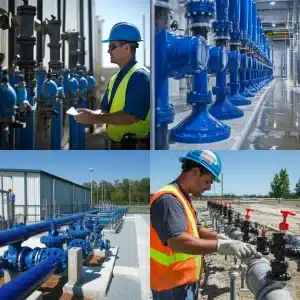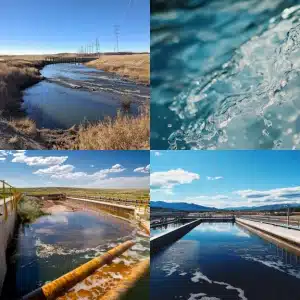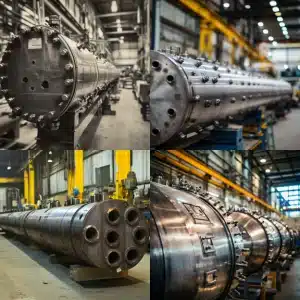
Preventing Water System Failures: How to Recognize When Your Pressure Vessel Needs Replacing
Water pressure vessels are crucial components in both residential and commercial water systems, maintaining consistent pressure and flow throughout your plumbing. When these vessels begin to fail, they can cause numerous problems ranging from minor inconveniences to major system failures. Recognizing the warning signs your water pressure vessel needs replacing early can save you from costly repairs and potential water damage. This comprehensive guide will help you identify when it’s time to replace your water pressure vessel before catastrophic failure occurs.
Understanding Your Water Pressure Vessel’s Function
Before diving into the warning signs your water pressure vessel needs replacing, it’s important to understand what these vessels do. A water pressure vessel, also known as a pressure tank, stores water under pressure to maintain consistent water flow and reduce the frequency of pump cycling. This extends your pump’s lifespan and ensures steady water pressure throughout your property.
Water pressure vessels typically contain a rubber bladder or diaphragm that separates water from a pressurized air cushion. This design allows the tank to absorb pressure fluctuations and deliver water at a consistent pressure without the pump running continuously.
Key Warning Signs Your Water Pressure Vessel Needs Replacing
Rapid Cycling of Your Water Pump
When your water pump turns on and off frequently—a condition known as “short cycling”—it’s one of the most common signs your water pressure vessel needs replacing. This occurs when the vessel can no longer properly store pressurized water. Under normal circumstances, your pump should run infrequently. Rapid cycling not only increases electricity consumption but also substantially shortens your pump’s lifespan.
Visible Corrosion and Rust
External corrosion is a serious warning sign that shouldn’t be ignored. Look regularly for rust spots, flaking metal, discoloration, and bubbling paint on your pressure vessel. These are clear signs your water pressure vessel needs replacing as corrosion compromises the tank’s structural integrity, potentially leading to leaks or catastrophic ruptures. If corrosion appears around seams or fittings, immediate replacement is recommended.
Water Leaks Around the Tank
Any leak from your pressure vessel definitively signals the need for replacement. Common leak locations include the air valve, pipe connections, tank seams, and pressure gauge. Even minor leaks indicate compromised structural integrity. Continuing to use a leaking vessel risks sudden failure and flooding, making this one of the most urgent signs your water pressure vessel needs replacing.
Decreased or Fluctuating Water Pressure
Inconsistent water pressure throughout your home often indicates a failing pressure vessel. When the internal bladder or diaphragm deteriorates, the system cannot maintain proper pressure. You might experience strong water flow that quickly diminishes, pressure that varies between fixtures, or drops during peak usage times. These fluctuations are important signs your water pressure vessel needs replacing.
Waterlogged Tank
A functioning pressure vessel should maintain a balance between water and compressed air. To check if your tank is waterlogged, turn off the pump power, open a faucet to release pressure, then press the air valve on top of the tank. If water emerges instead of air, your tank is waterlogged—a definitive sign your water pressure vessel needs replacing.
Unusual Noises
Strange sounds from your water system often indicate pressure vessel problems. Listen for hammering or banging in pipes, vibrations when water runs, continuous pump humming, or rushing sounds inside the tank. These noises occur when the vessel can’t absorb pressure fluctuations, creating water hammer effects. For more information about pressure issues, see our guide on pulsation in piping.
Age of Your Pressure Vessel
Most water pressure vessels last 5-10 years, depending on water quality and maintenance. If your tank has reached this age range, be vigilant for other signs your water pressure vessel needs replacing. Even without obvious symptoms, aging vessels are prone to sudden failure. Consider replacement if your vessel is over 8 years old, especially with other warning signs present.
When replacement becomes necessary, explore quality options like our ASME certified pressure vessels or learn about related products like pulsation dampeners. For professional guidance, contact our team or request a quote to find the right solution for your needs.
The Consequences of Delaying Replacement
Ignoring the signs your water pressure vessel needs replacing can lead to several serious consequences:
Increased Energy Costs
A failing pressure vessel causes your pump to work harder and cycle more frequently, significantly increasing your electricity consumption. This inefficiency can add substantial amounts to your utility bills over time.
Premature Pump Failure
When your pressure vessel isn’t functioning properly, your water pump experiences increased stress. This often leads to premature pump failure, adding another major expense to what could have been just a tank replacement.
Water Damage Risk
A catastrophic pressure vessel failure can release large volumes of water very quickly, potentially causing significant water damage to your property. This risk is particularly high with older tanks showing signs of corrosion.
System-Wide Issues
Problems with your pressure vessel can create pressure fluctuations that damage other components in your plumbing system, including pipes, fixtures, and appliances connected to your water supply. These issues are similar to those caused by pulsation in the oil and gas industry, but in a residential context.
Choosing a Replacement Pressure Vessel
When the signs your water pressure vessel needs replacing become apparent, selecting the right replacement is crucial. Consider these factors:
Size and Capacity
Choose a tank that’s appropriately sized for your water usage needs. A tank that’s too small will cycle frequently, while an oversized tank may not maintain proper pressure.
Quality and Construction
Look for pressure vessels made from durable materials with quality internal components. Tanks with butyl rubber bladders typically last longer than those with cheaper materials. For high-quality options, explore our selection of ASME certified pressure vessels.
Pressure Rating
Ensure the tank’s pressure rating matches your system’s requirements. Most residential systems require tanks rated for 100-150 PSI, but verify your specific needs.
Warranty Coverage
Select a pressure vessel with a solid manufacturer’s warranty. A longer warranty period often indicates the manufacturer’s confidence in their product’s durability.
Maintenance Tips for Your New Pressure Vessel
After replacing your water pressure vessel, regular maintenance can help extend its lifespan:
- Check the air pressure annually using a tire pressure gauge
- Inspect for signs of corrosion or leaks every few months
- Install a sediment filter to protect your tank from particulates
- Consider water treatment if you have aggressive water
- Schedule professional system reviews every 2-3 years
For specialized pressure vessel needs, explore our pressure vessels solutions or learn about pulsation dampeners that can help maintain consistent pressure.
Protect Your Water System with Timely Vessel Replacement
Recognizing the signs your water pressure vessel needs replacing prevents costly emergencies. Watch for pump cycling, pressure fluctuations, corrosion, leaks, and unusual noises to identify problems early. Don’t delay replacement when warning signs appear—the cost of a new vessel is far less than expenses from water damage, pump failure, and higher energy bills. Proper selection, professional installation, and regular maintenance ensure years of reliable service and consistent water pressure. Request a quote from our team for the right solution to your specific needs.
Need a reliable partner?
Red River specializes in the design and manufacturing of pressure vessels. We also fabricate related items such as prefabricated spools and skid packages.
Reach out to us today and experience the Red River difference. Where American-made products and American Values come together, we care more.
Frequently Asked Questions (FAQ)
1. How often should I inspect my water pressure vessel?
Most vessels should be inspected annually, but high-use or high-pressure systems may require semi-annual checks.
2. Can I repair a leaking vessel instead of replacing it?
Minor leaks may be patched, but recurring leaks usually indicate deeper issues, making replacement a safer long-term choice.
3. What’s the average lifespan of a water pressure vessel?
Steel vessels typically last 10–15 years, while fiberglass ones can last up to 20 years with proper maintenance.
4. What causes pressure fluctuations in a vessel?
Fluctuations often result from internal corrosion, diaphragm failure, or poor pressure regulation mechanisms.
5. Is noise coming from the vessel a serious concern?
Yes. Sounds like rattling or hissing may indicate weakening supports, internal damage, or impending failure.
6. How do I choose a reliable replacement vessel?
Consider your system pressure, temperature range, capacity needs, and compliance with ASME codes.
7. Can an old pressure vessel damage other parts of my water system?
Absolutely. A failing vessel can cause pressure imbalances that damage pipes, valves, and connected machinery.
8: Who should I contact for a professional assessment?
It’s best to consult with experienced pressure vessel fabricators to evaluate your current system. You can contact our team for professional assistance.
Key Takeaways
- Corrosion, leaks, and noise are early red flags.
- Low water pressure may point to internal failure.
- Frequent repairs often signal a vessel nearing its end of life.
- Timely replacement protects your system and budget.




